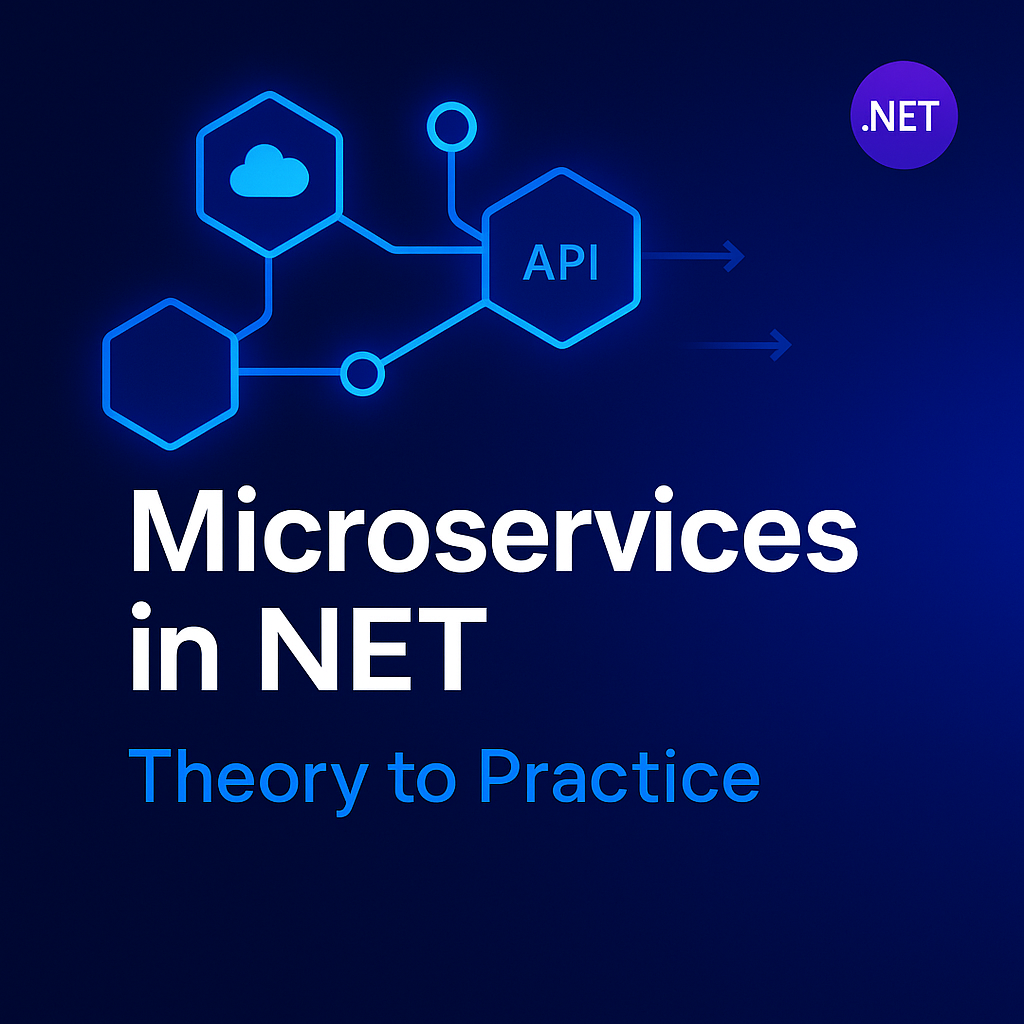Microservices in .NET: From Theory to Practice
Have you ever wondered how Netflix handles millions of users simultaneously, or how Amazon manages thousands of orders per second? The secret lies in microservices architecture. In this article, I'll guide you through the world of microservices in the .NET ecosystem - from fundamental concepts to advanced design patterns.
What are microservices and when to use them?
Microservices are independently deployable, small applications that implement single functionalities. This definition sounds simple but hides enormous implementation complexity.
Why microservices?
The main motivations are:
- "Scale out" scalability - ability to scale only the parts of the system that need it
- Faster change delivery - small teams can work independently
- Higher reliability - failure of one service doesn't paralyze the entire system
When to choose microservices?
Microservices aren't a cure-all. They work well when you have:
- Complex business domains with clear boundaries
- Independent development teams
- Need for high availability (99.9%+)
- Mature DevOps processes
Monolith vs microservices - honest comparison
Monolith offers simpler management, easier debugging, and lower infrastructure costs at the start. However, over time it becomes less scalable and slower to develop.
Microservices provide flexibility and scalability, but at the cost of operational complexity and higher infrastructure costs.
Design best practices
1. Domain design
Bounded Context is a key concept. Each microservice should handle one business domain:
├── OrderService (Bounded Context: Orders)
├── PaymentService (Bounded Context: Payments)
├── InventoryService (Bounded Context: Inventory)
└── NotificationService (Bounded Context: Notifications)
Clean Architecture helps maintain clean code:
- Domain layer - business logic
- Application layer - use cases
- Infrastructure layer - databases, external APIs
- Presentation layer - controllers, minimal APIs
2. Interfaces and contracts
OpenAPI/Swagger automatically generates documentation:
builder.Services.AddEndpointsApiExplorer();
builder.Services.AddSwaggerGen();
API Versioning ensures backward compatibility:
- Path versioning:
/api/v1/orders,/api/v2/orders - Headers:
API-Version: 1.0 - Media types:
application/vnd.api.v1+json
3. Communication: sync vs async
Synchronous communication (REST, gRPC) is simple but prone to cascading delays. If service A calls B, which calls C - the delay adds up.
Asynchronous communication through queuing ensures loose coupling and higher resilience, but introduces eventual consistency complexity.
4. Resilience patterns
The Polly library is a must-have for microservices:
var retryPolicy = Policy
.Handle<HttpRequestException>()
.WaitAndRetryAsync(3, retryAttempt =>
TimeSpan.FromSeconds(Math.Pow(2, retryAttempt)));
var circuitBreakerPolicy = Policy
.Handle<HttpRequestException>()
.CircuitBreakerAsync(3, TimeSpan.FromMinutes(1));
var policyWrap = Policy.WrapAsync(retryPolicy, circuitBreakerPolicy);
The Bulkhead pattern isolates resources - e.g., separate thread pools for different request types.
5. Observability
Without proper monitoring, microservices are a black box:
Logging:
- Serilog with sinks to ElasticSearch or Seq
- Structured logging with correlation ID
Tracing:
- OpenTelemetry for standard request tracing
- Jaeger or Zipkin for visualization
Monitoring:
- Prometheus + Grafana for metrics
- Azure Monitor for all-in-one solution
6. Security
Authentication and authorization:
- OAuth2/OpenID Connect with Duende IdentityServer
- JWT tokens with ASP.NET Core Authentication
builder.Services.AddAuthentication("Bearer")
.AddJwtBearer("Bearer", options =>
{
options.Authority = "https://your-identity-server";
options.RequireHttpsMetadata = true;
options.Audience = "your-api";
});
Secret management:
- Azure Key Vault
- AWS Secrets Manager
- Never commit secrets to repo!
7. CI/CD and DevOps
Automation is fundamental:
- GitHub Actions / Azure DevOps for pipelines
- Tests: unit (xUnit), integration, end-to-end
- Canary/Blue-green deployments minimize downtime
Data management in microservices
Database Per Service
Each service has its own database. This ensures isolation but eliminates global ACID transactions.
Saga Pattern
For distributed transactions, we use the Saga pattern - step-by-step compensation:
public class OrderSaga : ISaga
{
public async Task Handle(OrderCreated orderCreated)
{
// Step 1: Reserve inventory
await reserveInventory.Send(new ReserveInventory(orderCreated.OrderId));
}
public async Task Handle(InventoryReserved inventoryReserved)
{
// Step 2: Process payment
await processPayment.Send(new ProcessPayment(inventoryReserved.OrderId));
}
public async Task Handle(PaymentFailed paymentFailed)
{
// Compensation: Release reservation
await releaseInventory.Send(new ReleaseInventory(paymentFailed.OrderId));
}
}
Event Sourcing and CQRS
Separating reads from writes allows for:
- Independent scaling of read/write operations
- Complete change history
- Easier analytics
My recommendations
1. Start with a modular monolith
Don't jump into the deep end right away. Build a monolith with clear module boundaries (Bounded Contexts), then gradually extract microservices.
2. Automate everything
CI/CD, tests, monitoring, infrastructure provisioning - without automation, microservices become an operational nightmare.
3. Invest in observability
Without logs, metrics, and tracing, you won't find problems in a distributed system. This isn't optional.
4. Keep it simple
One communication standard, one logging approach, one DI framework across the entire organization.
5. Team education
Microservices require new skills: Domain Driven Design, resilience patterns, Kubernetes, observability.
